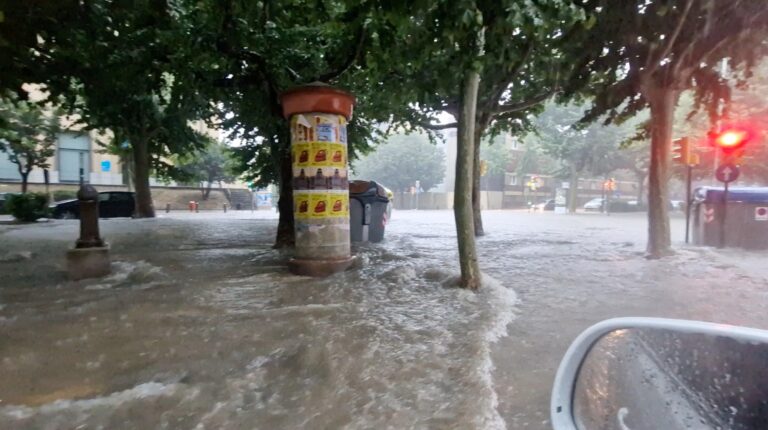Spain is grappling with extensive flooding that has brought much of the country’s summer travel plans to an abrupt standstill. Heavy rains have inundated key regions, disrupting transportation networks and forcing authorities to issue travel advisories amid growing safety concerns. As floodwaters continue to rise, tourists and residents alike face mounting challenges, marking a significant obstacle for one of Europe’s most popular summer destinations. This developing situation underscores the urgent need for responsive measures to address the impact of extreme weather events on Spain’s vital tourism sector.
Spain Battles Severe Flooding Disrupting Major Transportation Networks
Continuous torrential rains have inundated key regions across Spain, severely impacting the nation’s transportation infrastructure. Major highways have been submerged, causing extensive road closures and forcing authorities to implement detours that are stretching travel times significantly. Rail services have not been spared, as floodwaters and landslides have disrupted critical lines connecting metropolitan hubs. Travelers are urged to check real-time updates before embarking on any journeys, as emergency management teams race to restore functionality to affected routes.
Key transportation disruptions include:
- Partial closures on the A-3 and A-7 highways affecting access to Valencia and Alicante.
- Suspensions on high-speed rail links between Madrid and Barcelona.
- Suspended ferry services along Mediterranean coastal ports due to rising sea levels.
| Region | Type of Disruption | Estimated Resolution |
|---|---|---|
| Valencia | Flooded roadways & submerged rail tracks | 48-72 hours |
| Catalonia | Rail service suspension & landslides | 72 hours |
| Andalusia | Coastal ferry cancellations | 24 hours |
Impact on Summer Tourism Economy and Local Communities in Affected Regions
As the floods continue to ravage key tourist areas across Spain, the summer travel season has experienced an unprecedented freeze, directly impacting the nation’s robust tourism economy. Many popular destinations, from coastal retreats to historic towns, remain inaccessible due to damaged infrastructure and safety concerns. Local businesses, heavily dependent on the influx of summer visitors, face devastating losses. Hotels are reporting cancellations in the thousands, while restaurants and shops along flood-affected routes struggle to stay afloat amid dwindling foot traffic.
Beyond economic losses, the human and social toll on affected communities is significant. Families living in these regions are grappling with displacement and the destruction of homes, leading to emergency response strains. Recovery efforts are forcing shifts in labor from tourism services to reconstruction, further impacting income sources. Key impacts include:
- Drop in Tourist Arrivals: Estimated 40%-60% decline across flood-hit zones
- Revenue Loss: Local businesses forecast combined losses exceeding €200 million
- Community Disruption: Over 5,000 residents temporarily displaced
- Employment Impact: Seasonal job opportunities down by nearly half
| Region | Tourist Decline (%) | Estimated Revenue Loss (€ millions) | Displaced Residents |
|---|---|---|---|
| Andalusia | 55% | 80 | 1,800 |
| Valencia | 47% | 65 | 1,200 |
| Catalonia | 42% | 55 | 1,000 |
Safety Precautions and Alternative Travel Options for Tourists Amid Flood Crisis
Tourists planning to visit Spain during this unprecedented flood crisis should prioritize personal safety and stay constantly informed through local authorities and reliable news outlets. It is highly recommended to avoid travel to flood-affected zones, heed evacuation orders, and keep emergency kits handy that include essentials such as water, non-perishable food, flashlight, and first aid supplies. Those already in the affected areas should refrain from driving through flooded roads, stay away from riverbanks, and use waterproof phone cases to maintain access to emergency contacts.
Given the travel disruptions, exploring alternative options can ensure a smoother experience. Instead of flying into or out of impacted cities like Seville and Valencia, travelers can consider:
- Rail travel: Spain’s extensive rail network offers reliable intercity connections, often unaffected by localized flooding.
- Coastal routes: Bypassing flood-affected inland areas by taking scenic coastal drives or ferries.
- Postponing non-essential trips: Flexibility can prevent inconvenience and unsafe conditions.
| Alternative Travel Option | Key Benefits | Regional Availability | ||||||
|---|---|---|---|---|---|---|---|---|
| High-Speed Rail (AVE) | Safe, fast, and reliable | Nationwide | ||||||
| Coastal Ferry Routes | Avoids flood zones, scenic views | Mediterranean Coast | ||||||
|
Tourists planning to visit Spain during this unprecedented flood crisis should prioritize personal safety and stay constantly informed through local authorities and reliable news outlets. It is highly recommended to avoid travel to flood-affected zones, heed evacuation orders, and keep emergency kits handy that include essentials such as water, non-perishable food, flashlight, and first aid supplies. Those already in the affected areas should refrain from driving through flooded roads, stay away from riverbanks, and use waterproof phone cases to maintain access to emergency contacts. Given the travel disruptions, exploring alternative options can ensure a smoother experience. Instead of flying into or out of impacted cities like Seville and Valencia, travelers can consider:
|




